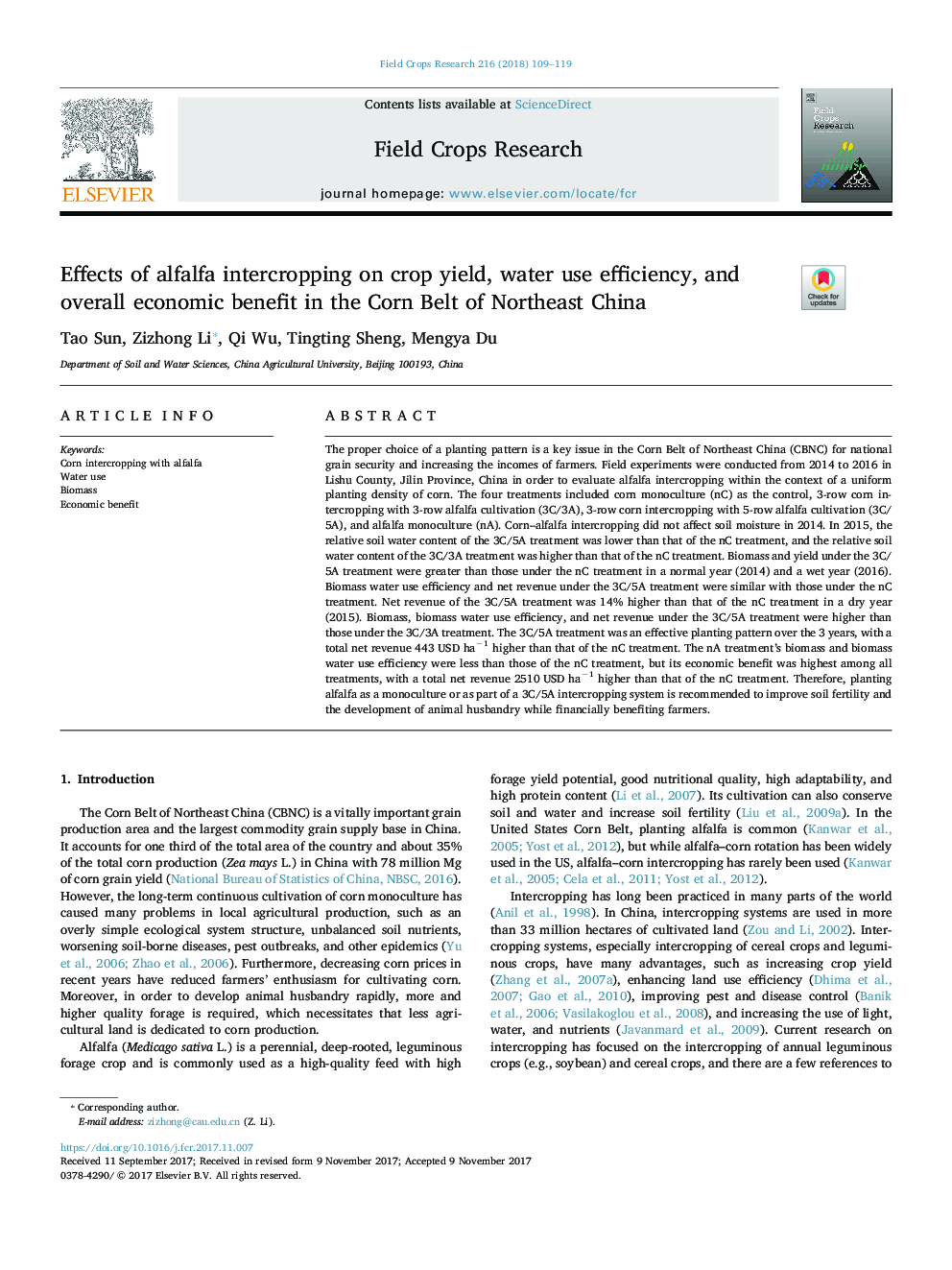| Article ID | Journal | Published Year | Pages | File Type |
|---|---|---|---|---|
| 8879429 | Field Crops Research | 2018 | 11 Pages |
Abstract
The proper choice of a planting pattern is a key issue in the Corn Belt of Northeast China (CBNC) for national grain security and increasing the incomes of farmers. Field experiments were conducted from 2014 to 2016 in Lishu County, Jilin Province, China in order to evaluate alfalfa intercropping within the context of a uniform planting density of corn. The four treatments included corn monoculture (nC) as the control, 3-row corn intercropping with 3-row alfalfa cultivation (3C/3A), 3-row corn intercropping with 5-row alfalfa cultivation (3C/5A), and alfalfa monoculture (nA). Corn-alfalfa intercropping did not affect soil moisture in 2014. In 2015, the relative soil water content of the 3C/5A treatment was lower than that of the nC treatment, and the relative soil water content of the 3C/3A treatment was higher than that of the nC treatment. Biomass and yield under the 3C/5A treatment were greater than those under the nC treatment in a normal year (2014) and a wet year (2016). Biomass water use efficiency and net revenue under the 3C/5A treatment were similar with those under the nC treatment. Net revenue of the 3C/5A treatment was 14% higher than that of the nC treatment in a dry year (2015). Biomass, biomass water use efficiency, and net revenue under the 3C/5A treatment were higher than those under the 3C/3A treatment. The 3C/5A treatment was an effective planting pattern over the 3 years, with a total net revenue 443 USD haâ1 higher than that of the nC treatment. The nA treatment's biomass and biomass water use efficiency were less than those of the nC treatment, but its economic benefit was highest among all treatments, with a total net revenue 2510Â USDÂ haâ1 higher than that of the nC treatment. Therefore, planting alfalfa as a monoculture or as part of a 3C/5A intercropping system is recommended to improve soil fertility and the development of animal husbandry while financially benefiting farmers.
Keywords
Related Topics
Life Sciences
Agricultural and Biological Sciences
Agronomy and Crop Science
Authors
Tao Sun, Zizhong Li, Qi Wu, Tingting Sheng, Mengya Du,
